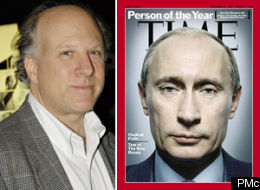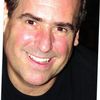
Those two subjects don't really synchronize, do they?
One was an enigmatic, wild individual either loved or hated by the masses; and the other, an old-guard publication that stayed true to historical roots and is widely read in the halls of power. One was totally into breaking conventions and irritating the establishment; while the other was interested in maintaining all the rules of Ivy League business schools--read Capitalism. There can't be much more of a contrast than that.
Where would these two polar-ends of the business spectrum entities meet?
In the newest issue (April 2012) of Harvard Business Review (HBR), there's an article by Walter Isaacson, the former CNN and Time magazine honcho who had the propitious timing of just finishing up a book on Jobs as his subject was in process of dying. Isaacson's aptly titled book, Steve Jobs has already sold more than 1.5 million copies.
In the article, "The Real Leadership Lessons of Steve Jobs," Isaacson attempts to capture and condense the "leadership" of Jobs; he succeeds in many ways even if Jobs was in many cases merely 'borrowing' the time-honored business principles of others ... as he was known to often do.
But Isaacson and his book are not the real story here. That would be the fascinating story of how one man changed the old-school-tie milieu for the better all the while battling those who opposed his changes. However, it's not Jobs I'm talking about.
And in one of those rare occasions where Steve Jobs isn't being held up as an iconic genius of management, somebody else is playing the disruptive role of 'Steve Jobs.' This time it's Adi Ignatius who's shaking up the status quo.
Never heard of Adi Ignatius? You're not alone.

Adi Ignatius with one of his better-known cover
stories, Time's 2007 "Person of the Year"
Ignatius is a highly successful, decorated journalist and editor who rose to the top of his profession working at the Wall Street Journal, Foreign Eastern Economic Review and later Time magazine. For Time, Ignatius was bureau chief in Beijing and Moscow, then editor of the Asian edition working under Isaacson and finally, deputy managing editor. Additionally, both Ignatius and Isaacson sit on the uber-powerful, Council on Foreign Relations.
While Ignatius generally worked for mainstream, revenue-dependent publications highly interested in enhancing new subscription sales and expanding readership, he got a new, rather different kind of editorial position in 2009: editor-in-chief of The Harvard Business Review.
At this juncture, I really do feel the need to, as Winston Churchill said: give this point "a tremendous whack." At its core, HBR is one of the most traditional, staid and sobering publications imaginable. Change in any measurable much less radical way, seemed entirely out of the question.
Its readers liked the distinctive way the table-of-contents scrolled down the left hand side of the cover; they liked the magazine's layout; and they also liked the "Executive Summaries" area in the back of the publication presumably because they could scan these summaries in seconds and appear to have read the entire magazine. This magazine is read by generations of rabid Harvard Business School graduates, CEOs and the greater business community as if it was the Holy Gospel.
"This is an incredibly successful brand that's 90 years old," Ignatius began with some wonderment, "however, we had to create a new identity for this publication; it was time. I wanted to modernize it but didn't want to mess with the enduring brand or our loyal readers." This was a classic case of not fixing it if it wasn't broken if there ever was one.
But a feisty, 'Jobs-like' Ignatius wasn't to be deterred from his appointed rounds of change. "I started with redesigning the HBR cover and trying not to tick off the longtime readers at the same time. After much discussion, I decided to take the table-of-contents (TOC) off of the cover."
Egad! What would Meg Whitman (HBS, '79), Jeff Immelt (HBS, '82), Michael Bloomberg (HBS, '66) or George W. Bush (HBS, '75) say about a drastic cover redesign for their business Bible?
Adding pictures to the notoriously graphic-free HBR cover was also bound to cause a shock to the delicate, change-resistant systems of its business- leader top-heavy circulation.
And adding comments on the web version of HBR and making it more like a blog seemed to be yet another advancement too much for some.
After tremendous research and a maelstrom of reader and staff group activity, the HBR redesign launched in January 2010.
"I braced myself for a barrage of criticism for changing the cover," Ignatius remembers worrying with good reason, "but as I said before I felt we had to create a new identity without ruining or even offending the core readership." That tsunami of animus never came, surprising everyone not just Ignatius.
Undoubtedly somewhat emboldened, Ignatius then decided to eliminate the beloved "Executive Summaries" section of HBR; big mistake.
"This time the bombardment I expected with the removal of the TOC, came in a barrage I couldn't ignore." After two issues, Ignatius re-instituted the section with a written apology to readers. So like any good executive leader, Ignatius proved he's not above reversing a bad decision and quickly too. (Can anyone imagine Jobs issuing an apology?)
Ignatius was ultra respectful of the HBR brand during the time we talked but he did say something that I had often thought about the publication I considered too exclusive and academic to read: "HBR was kind of like a collection of academic articles stapled together," he said earnestly, "and I wanted to get it into the hands of new readers and have them say, 'this isn't so daunting a publication' ... while also keeping our longtime readership pleased."
Toward the end of our conversation, Ignatius told me, "One of my HBR predecessors as editor-in chief of HBR said, 'HBR will never blog.'" This gives us a real insight into the mindset at this hallowed institutional publication against change of any kind and the extent to which Ignatius had the cards stacked against him.
So how did Ignatius' myriad changes affect HBR? In 2010 alone, HBR saw a 25% growth in online subscriptions. Consider Ignatius' digital strategy including more 'blog-like' dynamics a success. Add the 700,000 Twitter followers and 468,000 Facebook 'likes,' and you have a modern-day success story for an ancient media property.
The real-world, analog, printed publication results have been astonishing too. In a magazine world where most publications have been scorched by reduced sales of 10% or more, HBR's magazine sales are up 20%, according to Ignatius who's quick to point out a hefty $16.95 price per HBR issue.
I clearly saw at the end of our conversation, how timely and necessary Ignatius' arrival at HBR really was. "Time is huge," he said, "with about four million readers. But the weird thing was, I never had the feeling anybody was reading it."
"Except HBR is much different than Time. HBR readers are part of the global business economy; they're building companies and employing lots of people," Ignatius said vigorously. There's no doubt a management lesson in his words: that while both are very different publications, installing new ideas and making copious changes when necessary is a tough thing to promote and then get right; it can often make the difference between participating in a 'new economy' or dying with an old one.
